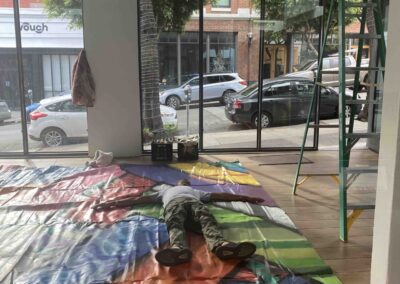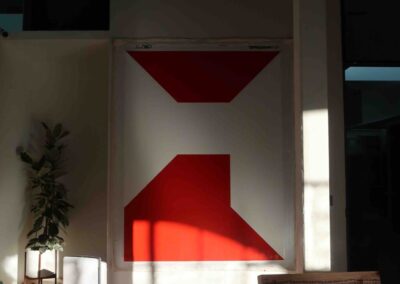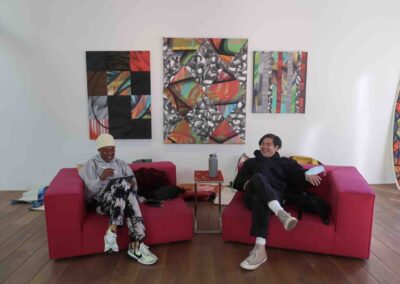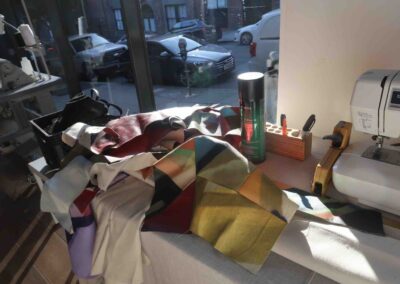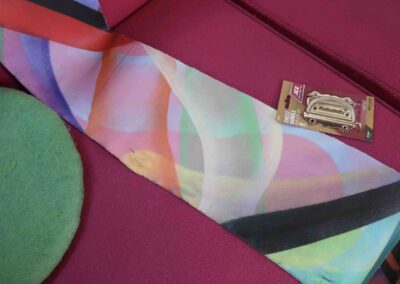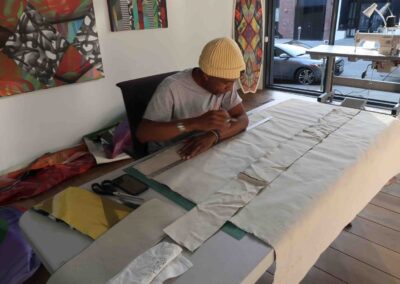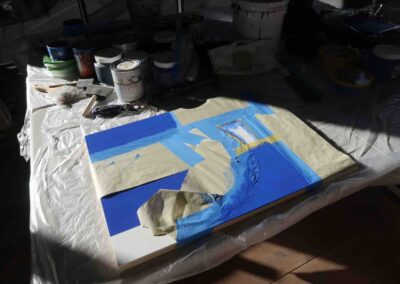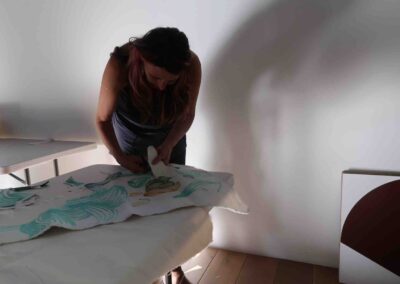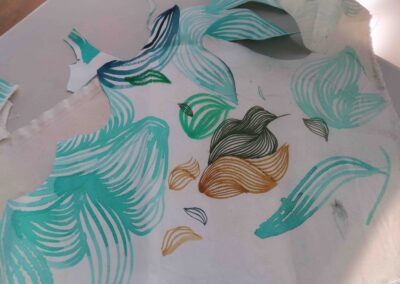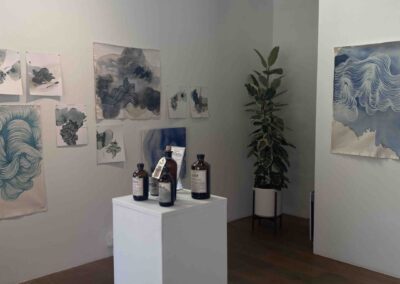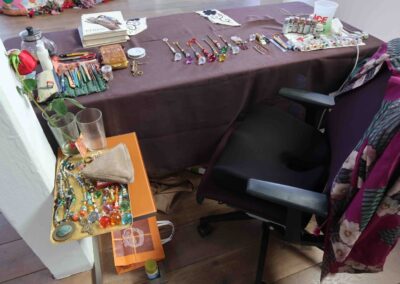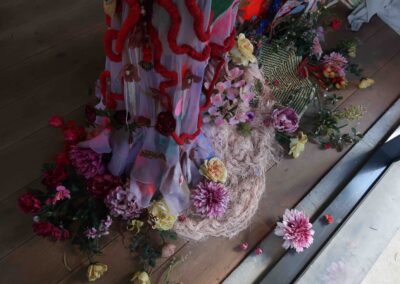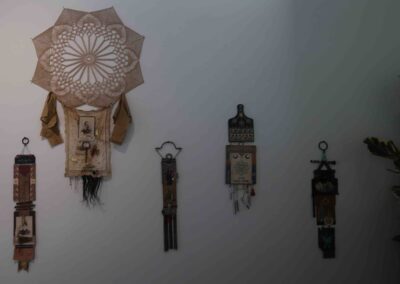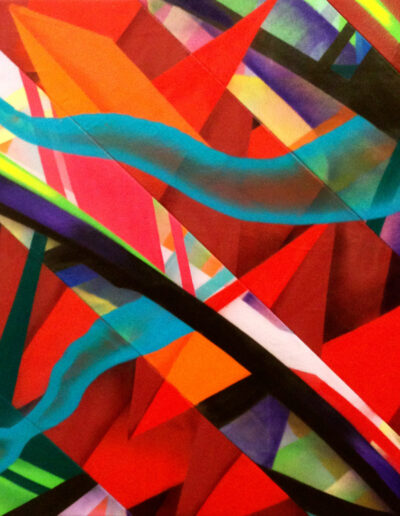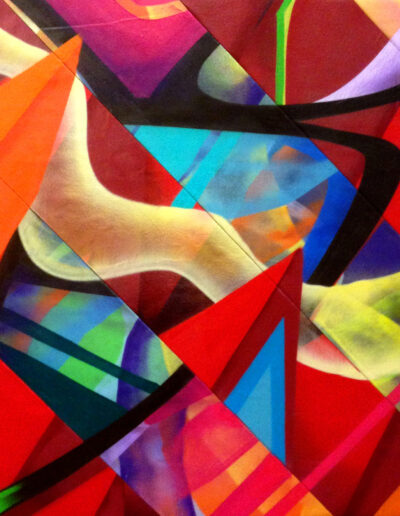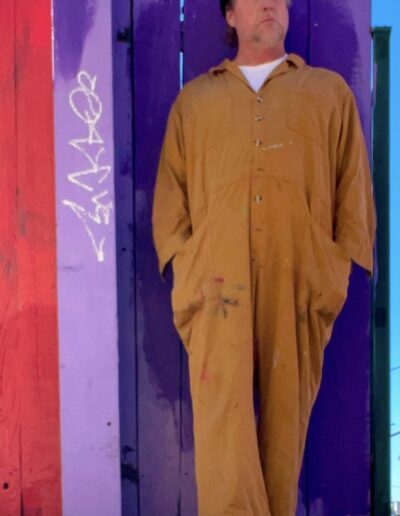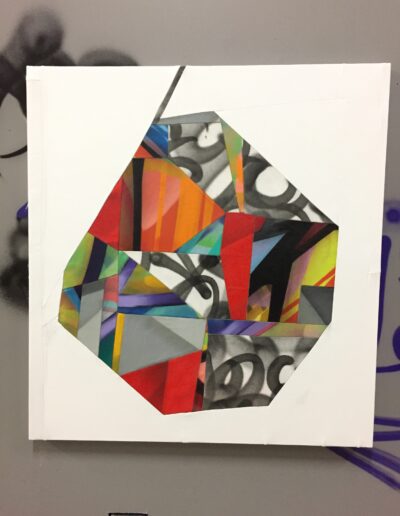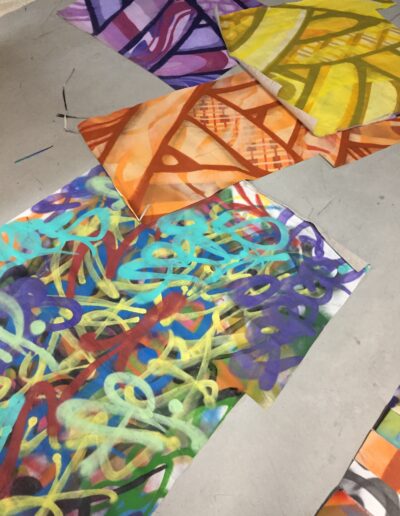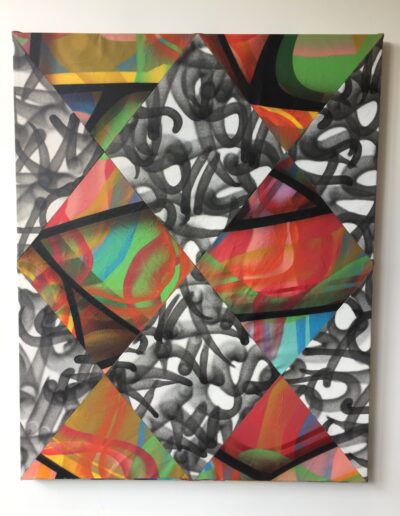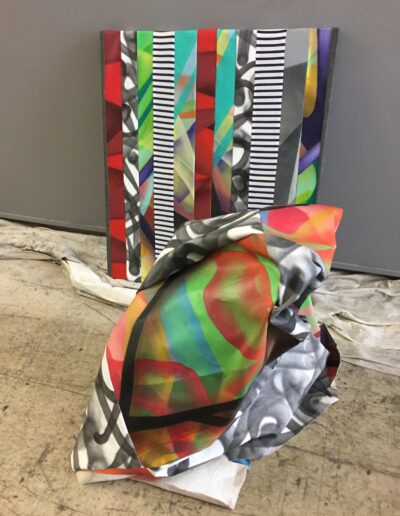Piecing was the exhibition and first-ever open studio of Apexer, highlighted by guest appearances from Jet Martinez, Chad Hasegawa, Paz de la Calzada, and Monica Canilao.
There are so many misconceptions surrounding graffiti and street art. If you delve into the medium and its history, you realize that street art isn’t just about graffiti. Street art has been labeled in various ways, from vandalism to fine art, depending on the marketability and profitability of the work. Street art has, in fact, often been judged not by its intrinsic qualities but by its ownership and location.
Artists of the New York School of train writers were called “writers” because their work centered on writing their names on walls. Mark-making is one of the tenets of artmaking; you can’t create without it, and writers, in this respect, are no different. For this reason, Apexer prefers not to be called a “street artist” or “graffiti artist” but a writer. Yet, in choosing to be identified as such, Apexer has found himself somewhat outside the mainstream, and he has had to work hard to prove his worth as an artist, which he has most certainly been able to do.
In the past, gallerists frequently visited his studio and the studios of his artist friends, but he noticed they were only picking some artists to promote and not all of them. Apexer recalls this as his first moment to pause and reflect on himself and what was expected of him as an artist. He ended up backing out from his first gallery show to process his identity as an artist further and realized he wanted to have a say in the narrative around him and his career. He wanted the freedom to experiment and be himself. Integrity and humanity are most important to Apexer, and you can feel this in his work and the way he expresses himself.
Apexer has been conceptualizing his work consciously over the last eight years and subconsciously for the last sixteen. In 2005, he started the Gestalt Collective, made up of a group of his artist friends. They spoke to a new group of local artists, and the Bay Area art community celebrated the Gestalt Collective for answering the question “what’s next?”. The collective spurred a grassroots movement that was anti-establishment, emphasizing a do-it-yourself approach to making art.
While with the group, Apexer could visualize a way to transition from his public practice to his studio practice. As did other public artists, he struggled with the duality between the two and tried to define exactly how he felt about the merits of each. After undergoing self-discovery, he started doing gallery shows, eventually transitioning eight years ago to primarily commercial projects.
Piecing is the culmination of Apexer’s career as a public artist and a writer. It explores how the audience and community participate in his artmaking and continue to do so via his “open studio.” Apexer takes the public art practice and brings it indoors. In producing his works in this new gallery environment, he considers what constitutes gallery work. He reflects on the dualities inherent in art craft making in the United States. He plays with the similarities between what people call graffiti and another American art form, quilt making. Piecing has a double meaning. Piecing is what you call a stylized mural painting of your name that involves connecting letters like a block of patterns in the writer community. In quilting, piecing is when fabric pieces are sewn together to form a block, garment, or quilt.
Apexer, whose mother was a seamstress and his former studio mate a seamster, gravitated toward quilt making. After cutting spray-painted canvas into square tile patterns and then, with the help of his studio mate, sewing them together with scrap fabric, he created his first rendition of a canvas quilt. From his first piece nine years ago, the elements of these quilts compelled the viewer to ask, “What’s going on here and why?”
A quilt is such a recognizable object. To see a piece of art treated as such, getting dirty through use, was freeing for Apexer, and his “quilts” from the beginning drew some intriguing comments from viewers. The process inherent in his quilt making brought back the human hand, the human eye, and the human connection into artistic creation.
Through visiting Apexer’s open studio and observing firsthand Apexer and his quilting process, the hope was that viewers would detach from preconceived notions about what art belongs in a gallery and will be impressed, consciously and or subconsciously, with the creative process behind it.
EXHIBITION DATES:
CURRENTLY BASED:
ARTIST WEBSITE:
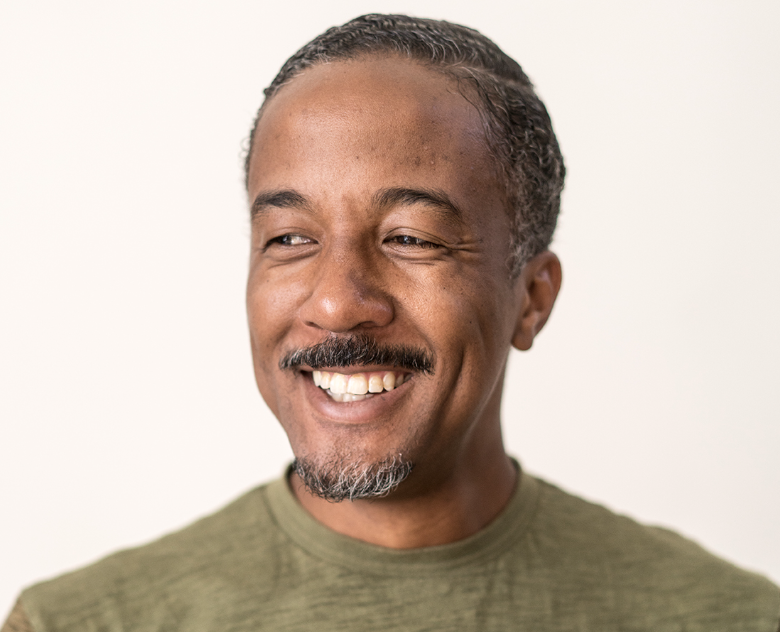
Apexer, also known as Ricardo Richey, is a street artist who creates colorful abstract patterns through spray paint. Part of the Gestalt Collective that engages in collaborative murals in San Francisco, Apexer curated mural projects on Bluxome Alley, other districts of San Francisco, and the SFMOMA display windows in association with St. Johns Community Center (San Francisco, 2002). His work has been shown extensively both in the Bay Area and abroad. Recent group exhibitions include Calligraffiti: Writing in Contemporary Chinese and Latino Art, Pacific Asia Museum, Pasadena, CA (2009); Bay Area Now 4, Yerba Buena Center for the Arts, San Francisco (2005), White Walls, and the Luggage Store Gallery. He was the artist in residence at the Headlands Center for the Arts (2007) and was featured in documentaries and publications regarding the Mission District in San Francisco.
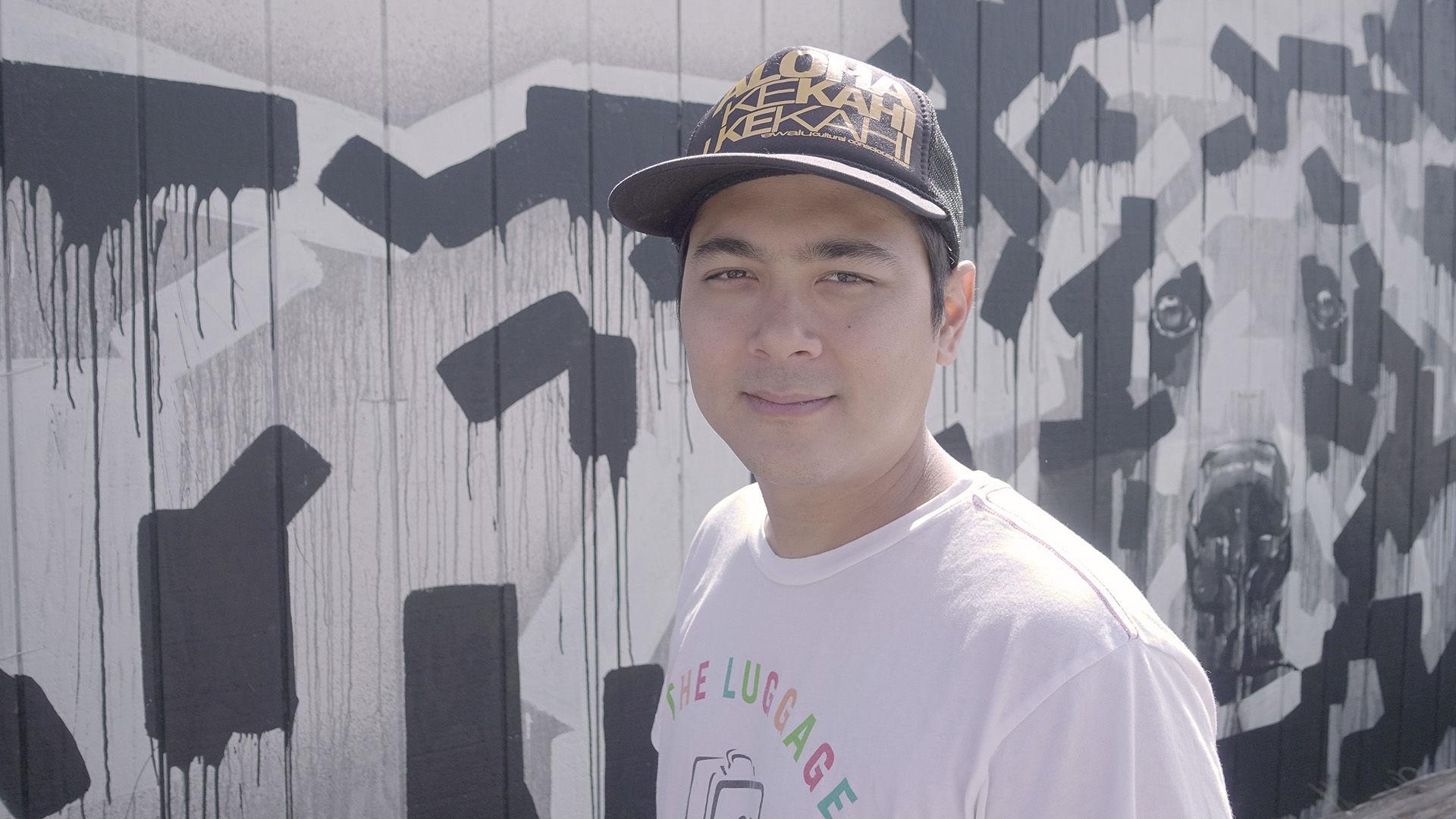
Chad Hasegawa was born and raised in Honolulu, Hawaii. Enthralled with graffiti and the art of the Mission School, he moved to San Francisco in 2000. He received a BFA in advertising from the Academy of Art University and worked for top agencies, including Venables Bell & Partners and Goodby Silverstein & Partners. After leaving advertising, he concentrated on creating murals on the streets and painting canvases for both commercial and non-profit gallery exhibitions. He quickly gained recognition for his bold and colorful latex paintbrush strokes that pushed the boundaries of public art.
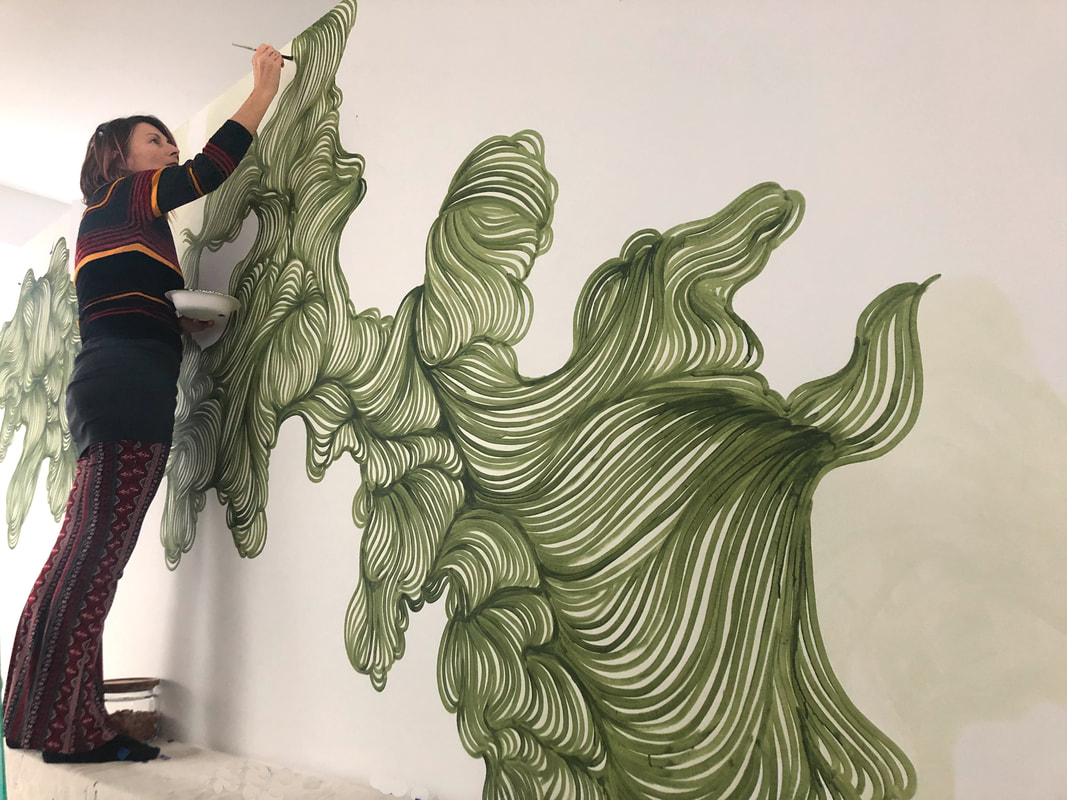
Paz de la Calzada is a San Francisco-based artist working in site-specific murals, installations, and public art. Born and raised during the democratic transition in Spain, she witnessed the subversive counterculture that flourished in a country that moved from systemic oppression and censorship to a path of self-liberation, awakening, and healing.
Growing up in an environment where national catholicism blended with ancient pagan rituals, superstition, and plant magic, Paz was inspired to create art projects investigating the significance of nature to human life, highlighting art’s capacity to heal the broken aspects of our society.
Her site-specific installations and paintings draw audiences into unexpected and potentially liminal experiences elevating banal materials into sublime meditative landscapes that encourage contemplation, introspection, and healing.
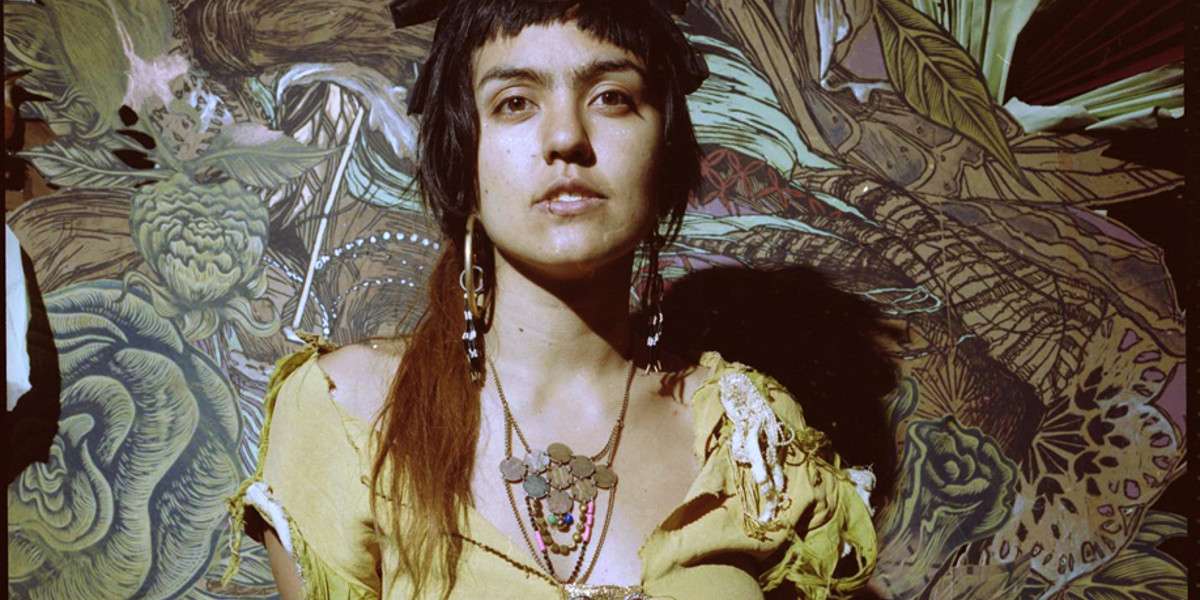
Monica Canilao lives in the heart of Oakland and spends her days stitching, painting, printing, building, and breathing life into the refuse that dominates her surroundings. Moving across different media, sometimes with friends and sometimes alone, Monica creates a delicate visual record of her personal and communal space.
She received a BFA from the California College of Arts and Crafts. Her work has been shown both internationally and nationally: at The Luggage Store Gallery (San Francisco), Inner State Gallery (Michigan), Chandran Gallery (SF), Black Rat Press (London), Subliminal Projects (LA), and at KRETS (Sweden). She has also done large-scale public art installations at Miami Art Basel. Her work has been displayed in community spaces and abandoned places worldwide.

Jet Martinez is a full-time muralist and painter based in Oakland, California. He lives with his much-loved and talented wife and two ridiculously energetic children.
After receiving a BFA in Painting and Printmaking from the San Francisco Art Institute (he had previously studied Spanish Literature at the University Of Colorado), Martinez acted as one of the Clarion Alley Mural Project directors in SF’s Mission District for nearly a decade.
His paintings have been exhibited in various institutions and galleries, including Syracuse University, Facebook HQ, MACLA(Museo de Arte y Cultura Latino Americana), Mesa Center for the Arts, SomArts, SF Arts Commission Gallery, White Walls, Project1 SF, and 111 Minna.
His work has been featured in the New York Times and other well-respected publications and books. In addition, the artist’s murals grace the walls of many public streets in the US and abroad in major cities, including Oaxaca, Mexico; Zurich, Switzerland; and Florianopolis, Brazil. His murals have been commissioned by Facebook, Tipping Point Foundation, Red Bull, and Climate Works Foundation. SF General Hospital recently commissioned a public piece for its new emergency department through the SF Arts Commission.

